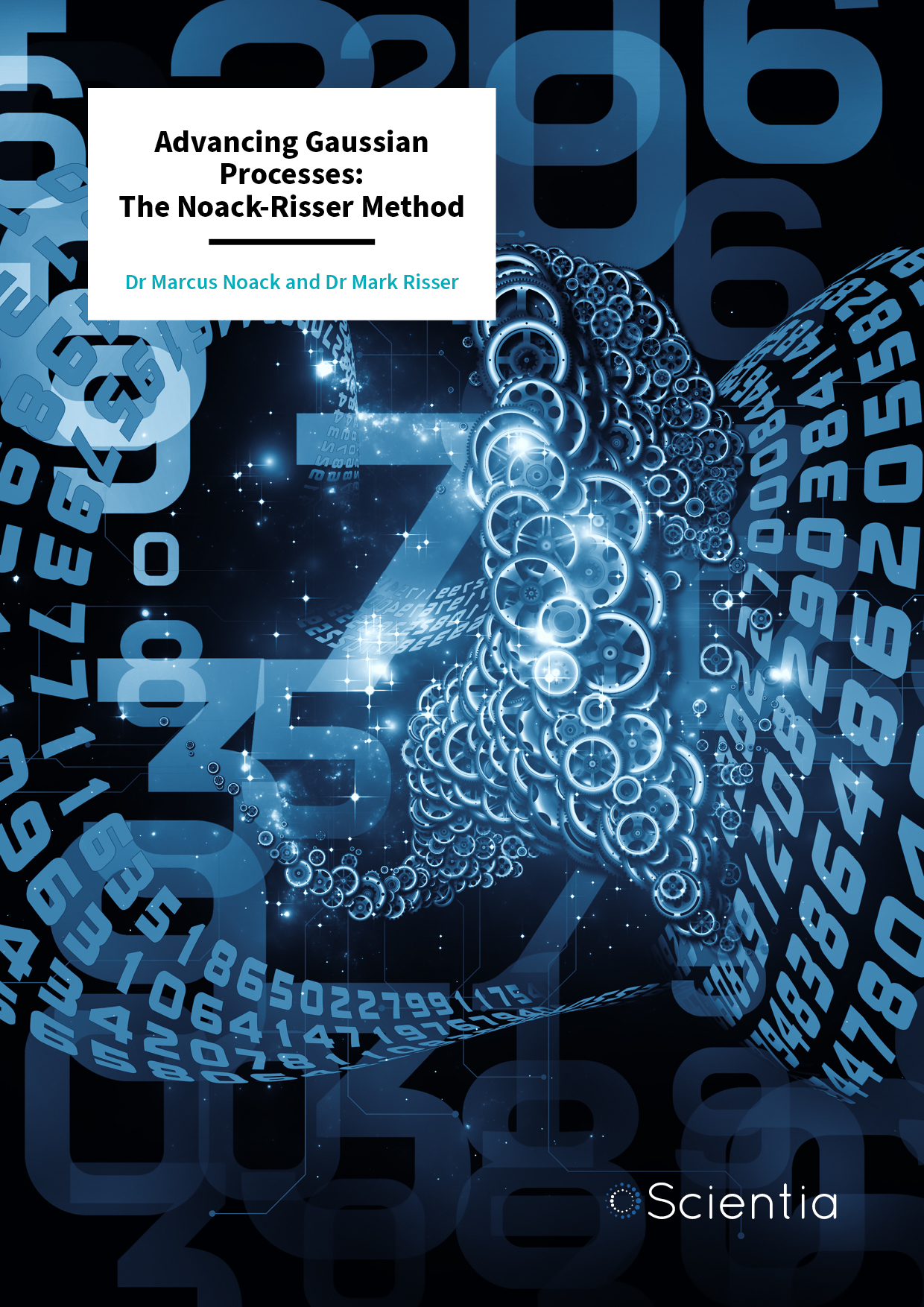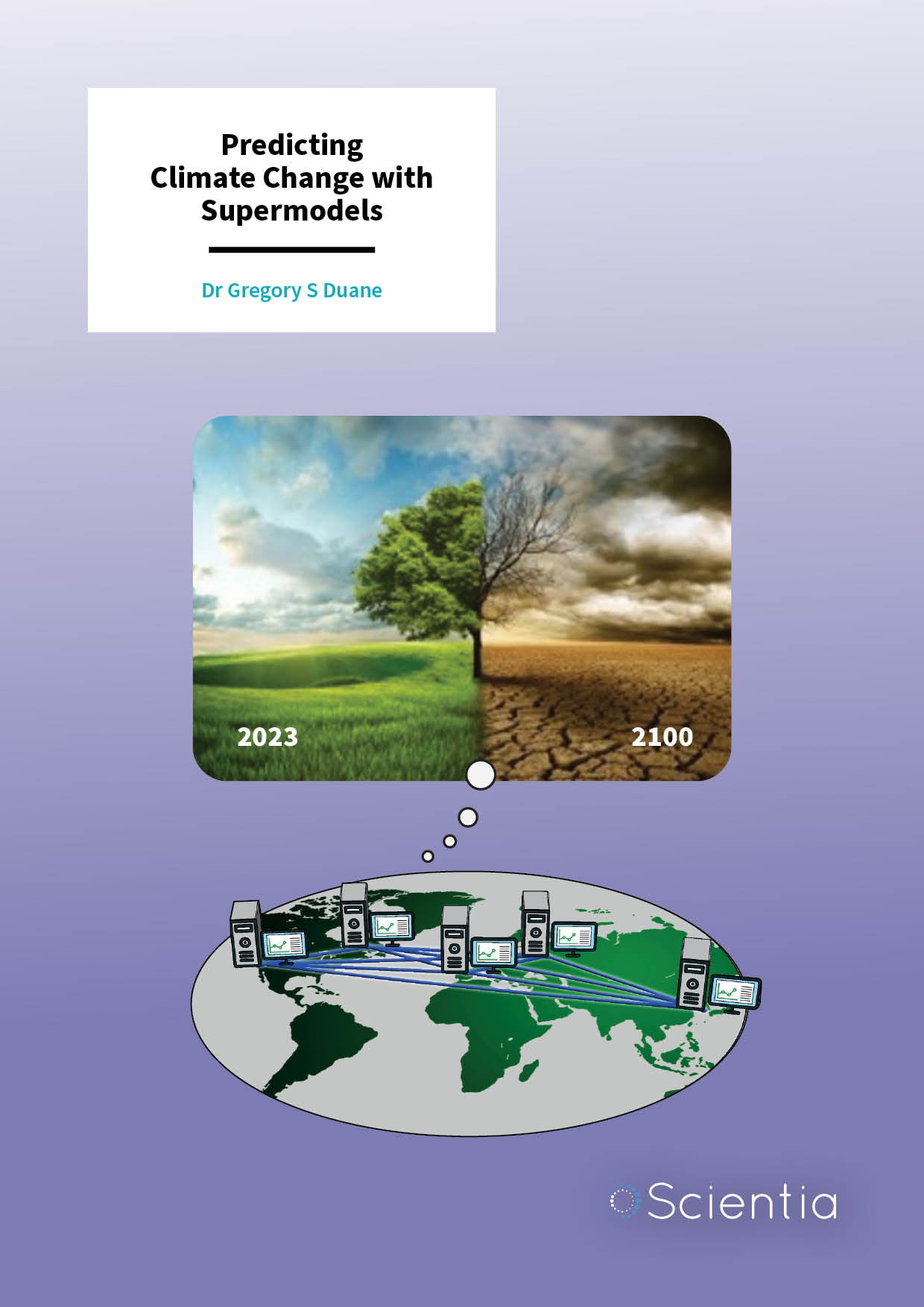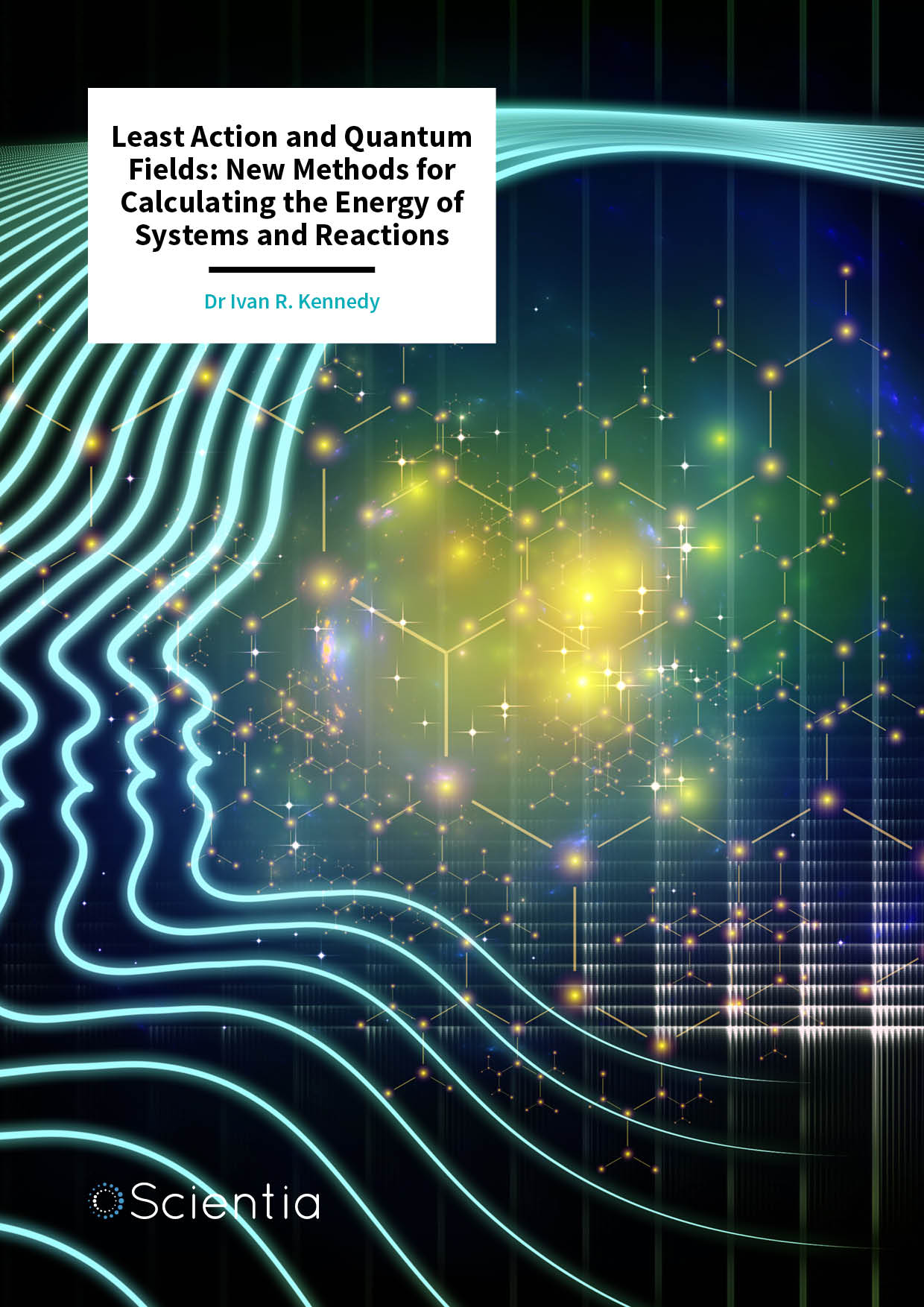Dr Olalla Castro-Alvaredo | Measuring Entanglement: Symmetry-Resolved Entropy
Dr Olalla Castro-Alvaredo of the City University of London (UK) and her collaborators are advancing our understanding of an important phenomenon of quantum mechanical systems known as entanglement and, especially, its mathematical measures. Symmetry-resolved entanglement entropy is one such measure. Their study focuses on special quantum states which are excited with respect to a ground state. The research shows how the entanglement amongst quantum particles can be measured and assesses the contribution to the entanglement of quasiparticle excitations, particularly in the presence of additional symmetries.
The Unique Connection Between Quantum Particles
In the complex world of quantum mechanics, entanglement is a key principle that challenges our common understanding of the universe. In a few words, entanglement is a unique connection between quantum particles that allows them to share properties, even when they are far apart. Albert Einstein famously referred to this as ‘spooky action at a distance’.
But entanglement is more than just an academic curiosity; it lies among the foundations for emerging technologies like quantum computing, which has the potential to vastly outperform today’s computers, and quantum cryptography, a new form of cybersecurity that could offer unprecedented security based on the principles of physics.
Dr Olalla Castro-Alvaredo of the City University of London in the UK works with colleagues to explore a specialised aspect known as symmetry-resolved entanglement entropy. Essentially, this is a way to measure the level of entanglement in a given system. This approach looks into how the internal symmetries of quantum systems influence the way entanglement is distributed.
A Philosophical Battleground
Quantum entanglement was, at its conception (or discovery!), a battleground for philosophical debates, notably between Einstein and the Copenhagen interpretation advocates. Despite its controversial inception, entanglement has emerged as a fundamental aspect of quantum theory, elucidating the non-local interactions that defy classical physics’ locality principle.
A simple illustration of entanglement is the Einstein-Podolsky-Rosen paradox, involving a pair of entangled particles created simultaneously by the decay of an atom. If one particle is observed to spin clockwise, its entangled partner, regardless of the distance separating them, will spin counterclockwise immediately upon measurement. This instantaneous state determination across spatial expanses without any observable transfer of information challenges our deepest intuitions about the fabric of reality: indeed, according to general relativity, information cannot move faster than the speed of light.
Regardless, quantum entanglement is an observed phenomenon, and today, it plays a pivotal role in several technologies. Its role in quantum computing is to enable a superposition of entangled qubits to perform multiple calculations simultaneously, offering a leap in processing power over traditional binary systems. Quantum cryptography benefits from entanglement’s sensitivity to observation, as any attempt to intercept entangled particles alters their state, providing an unbreachable protocol for secure communication.

Mathematical Tools to Quantify Entanglement
Entanglement measures serve as the mathematical tools that quantify the degree of entanglement within quantum systems. At the heart of quantum mechanics, entanglement signifies the intricate correlations that exist between parts of a quantum system, allowing distant particles to exhibit linked properties. For applications, it is crucial to keep track of the level of entanglement in a system to ensure it performs as requested: for this purpose, various entanglement measures have been developed, including entanglement entropy, concurrence, and negativity. Each measure provides a different lens through which to view and quantify entanglement, from the overall shared information between subsystems to the specifics of bipartite entanglement. By applying these measures, physicists can not only gauge the depth of entanglement within systems but also manipulate quantum states for applications in computing, cryptography, and beyond.
While traditional entanglement measures offer a broad view of quantum interconnectedness, they sometimes fall short when applied to complex quantum systems, largely due to the size of the computations that become necessary to obtain an accurate measurement.
Symmetry-resolved entanglement entropy is a relatively novel proposal that aims to measure by dissecting the entanglement entropy according to the symmetries of the system. Traditional entanglement entropy measures the total quantum information shared across a bipartite system. Symmetry resolved entanglement entropy refines this by partitioning the entropy across different symmetry sectors, offering a more detailed picture of entanglement’s structure.
This approach assumes that the system has an internal symmetry, but luckily, this is a common feature in quantum systems. For instance, in a quantum system exhibiting spin symmetry, symmetry-resolved entanglement entropy can distinguish between the entanglement contributed by spin-up and spin-down states, enabling analyses with a tremendous level of detail.
The case considered in Dr Castro-Alvaredo’s work is the one of zero-density excited states: essentially, these refer to specific quantum states that emerge when a finite number of particles or excitations are introduced above the ground state of a system. These states are considered in a ‘scaling limit’, meaning that as the system and the subsystem infinitely expand, their size ratio remains constant, which, in turn, allows the identification of fundamental aspects of the system that remain consistent, regardless of future evolutions, that is universal properties.
New Methodologies to Calculate Symmetry-resolved Entanglement Entropy
Dr Castro-Alvaredo and her team have developed methodologies to calculate symmetry-resolved entanglement entropy in 1+1 dimensional quantum field theories, utilising techniques from integrable systems theory. A key part of their research involves the use of form factors, which are mathematical tools used to calculate the correlation functions in quantum field theories. By applying these tools, the team has been able to derive expressions for symmetry-resolved entanglement entropy that apply to a broad range of quantum systems.
One significant finding from their work is the identification of a universal behaviour of symmetry-resolved entanglement entropy across different quantum systems. They demonstrated that for systems with U(1) symmetry (a type of symmetry related to conservation laws in physics), the symmetry-resolved entanglement entropy can be explicitly calculated and exhibits a simple dependence on the system’s symmetry charges.
This work involves adapting a method known as form factor bootstrap, which is usually applied to understand how particles interact and scatter in quantum field theories. By using this method in a new way, the researchers are able to study entanglement in more detail, and through careful calculations and a strong foundation in theory, the team has developed formulas that describe how this type of entanglement works across different quantum systems.
What’s most impressive about these formulas is that they’re universal, meaning they can be applied to a wide range of scenarios. This is a big step forward in understanding the specifics of quantum entanglement because it offers a clear way to measure and analyse entanglement based on the symmetries present in a quantum system. Essentially, it provides a detailed map of how entanglement is structured, which is important for advancing our overall understanding of quantum physics.
The Universal Nature of Entanglement
This research not only affirms the universal nature of entanglement in quantum systems but also expands our understanding by providing a framework to quantify the symmetry-resolved entanglement entropy and its moments in a universal way that is both precise and widely applicable. Dr Castro-Alvaredo’s findings suggest that the relationships discovered to date are not confined to the specific models studied but will likely extend to other symmetries and even higher-dimensional theories.
SHARE
DOWNLOAD E-BOOK
REFERENCE
https://doi.org/10.33548/SCIENTIA1048
MEET THE RESEARCHER

Dr Olalla Castro-Alvaredo
City University of London
London
UK
Dr Olalla Castro-Alvaredo is a theoretical physicist specialising in low-dimensional quantum field theory. She has made significant contributions to the study of integrable 1+1-dimensional quantum field theories and related models. Her expertise spans statistical models, conformal field theories, and integrable quantum spin chains. Since beginning her research career in 1999, Dr Castro-Alvaredo has made substantial contributions to the development of the bootstrap program, applying the thermodynamic Bethe ansatz, and employing the form factor program to a variety of problems. Since 2007, she has applied form factor techniques to study entanglement measures in quantum integrable models using a technique that she co-pioneered: branch point twist fields. More recently, she has co-authored work on the generalised hydrodynamics approach, a leading approach to studying the dynamics of many-body quantum systems out of equilibrium.
CONTACT
E: o.castro-alvaredo@city.ac.uk
W: https://olallacastroalvaredo.weebly.com/
KEY COLLABORATORS
Professor Benjamin Doyon, King’s College London, London
Professor Andreas Fring, City, University of London
Dr David X Horváth, King’s College London
Dr Stefano Negro, University of York
FUNDING
Engineering and Physical Sciences Research Council
FURTHER READING
L Capizzi, O Castro-Alvaredo, C De Fazio, et al., Symmetry Resolved Entanglement of Excited States in Quantum Field Theory I: Free Theories, Twist Fields and Qubits, Journal of High Energy Physics, 2022, 27. DOI: https://doi.org/10.1007/JHEP12(2022)127
OA Castro-Alvaredo, C De Fazio, B Doyon, IM Szécsényi, Entanglement Content of Quasi-Particle Excitations, Physical Review Letters, 2018, 121, 170602. DOI: https://doi.org/10.1103/PhysRevLett.121.170602
JL Cardy, OA Castro-Alvaredo, B Doyon, Form factors of branch-point twist fields in quantum integrable models and entanglement entropy, Journal of Statistical Physics, 2007, 130, 129–168. DOI: https://doi.org/10.1007/s10955-007-9422-x

REPUBLISH OUR ARTICLES
We encourage all formats of sharing and republishing of our articles. Whether you want to host on your website, publication or blog, we welcome this. Find out more
Creative Commons Licence (CC BY 4.0)
This work is licensed under a Creative Commons Attribution 4.0 International License. 
What does this mean?
Share: You can copy and redistribute the material in any medium or format
Adapt: You can change, and build upon the material for any purpose, even commercially.
Credit: You must give appropriate credit, provide a link to the license, and indicate if changes were made.
SUBSCRIBE NOW
Follow Us
MORE ARTICLES YOU MAY LIKE
Dr Tsun-Kong Sham – Dr Jiatang Chen – Dr Zou Finfrock – Dr Zhiqiang Wang | X-Rays Shine Light on Fuel Cell Catalysts
Understanding the electronic behaviour of fuel cell catalysts can be difficult using standard experimental techniques, although this knowledge is critical to their fine-tuning and optimisation. Dr Jiatang Chen at the University of Western Ontario works with colleagues to use the cutting-edge valence-to-core X-ray emission spectroscopy method to determine the precise electronic effects of altering the amounts of platinum and nickel in platinum-nickel catalysts used in fuel cells. Their research demonstrates the potential application of this technique to analysing battery materials, catalysts, and even cancer drug molecules.
Dr Marcus Noack and Dr Mark Risser | Advancing Gaussian Processes: The Noack-Risser Method
Dr Marcus Noack and Dr Mark Risser, researchers at Lawrence Berkeley National Laboratory, have recently proposed a significant advancement in the area of machine learning and data science that promises significant computational improvements: the enhancement of exact Gaussian Processes for large datasets, significantly improving data analysis capabilities for samples even beyond 5 million data points.
Dr Gregory Duane | Predicting Climate Change with Supermodels
Our universe is comprised of fascinatingly complex systems. Systems such as the Earth’s climate can, at first glance, seem far too complex and chaotic to predict accurately. Dr Gregory Duane and his team at the University of Colorado have been developing complex computational models that can learn from past data, providing us with intriguing insights and more accurate predictions about the future.
Dr Ivan Kennedy | Least Action and Quantum Fields: New Methods for Calculating the Energy of Systems and Reactions
The Principle of Least Action is a well-known tool for mathematicians and theoretical physicists. Simply put, the Principle of Least action states that, for a system to progress from one state to another, the variation in the average kinetic energy of the system minus the average potential energy of the system will be as little as possible. Dr Ivan Kennedy from the University of Sydney has found that the application of this important theorem, combined with the idea of a pervasive quantum field, to processes such as chemical reactions, atmospheric phenomena, and stellar structure, yields some unexpected but exciting results.





